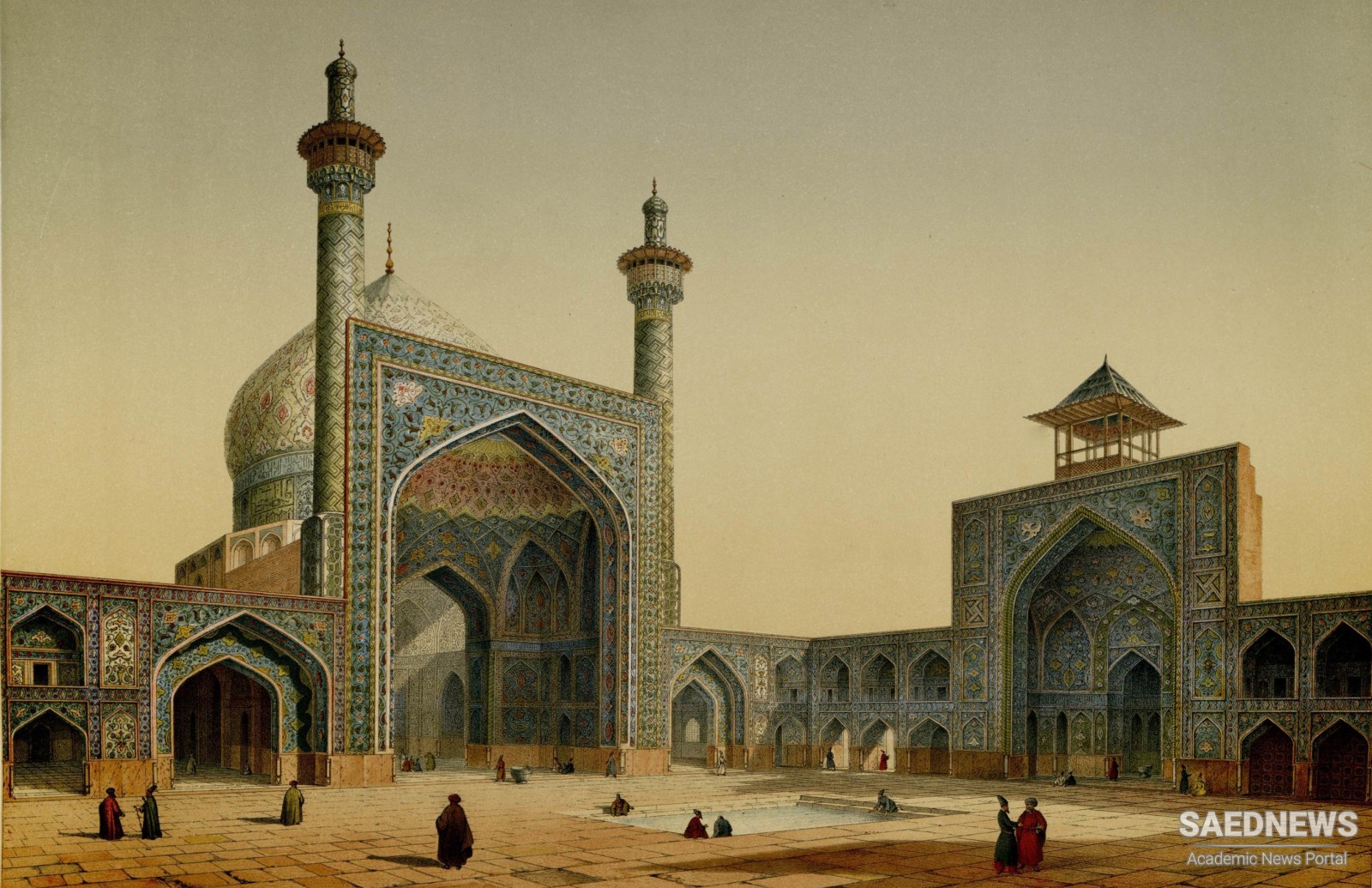Kashan was the next city to be visited and Chardin comments: “There is not made in any place of Persia more Sattin, Velvet, Tabby, Plain Tissue, and with Flowers of Silk, or Silk mingled with Gold and Silver, then is made in this City.” It still remains the “silk town” of Persia. The long journey was rapidly approaching an end. Rising from Kashan to the Koh Rud Pass, the route led through the mountains and, at last “drawing near that great city, that we thought our selves in the Suburbs, two hours before we got thither. We enter’d the City by five a Clock in the morning, all in good health, Thanks be to God.”
Upon reaching the convent of the Capuchin friars, where he lodged, Chardin received a bag of letters “from almost all Parts of the World.” As a result he immediately indulges in a digression and gives a most interesting account of the French expedition to the East Indies, which the Dutch were able to ruin. He then turns to his main task, which was to secure payment for the valuable consignment of jewelry, which he was ready to hand over. The position was full of difficulty. Apart from the fact that the Shah was less wealthy than he appeared to be, the Prime Minister, who is described as “ a mighty wise Minister, full of wit and of great Integrity,” was a fanatical Moslem and bitterly hostile to Christians. Chardin gives an illuminating account of the disgraceful treatment that the drunken Shah inflicted on this devoted servant. When he steadily refused to drink the forbidden juice of the grape, it was flung in his face and he was ordered to “drink some Coquenard” or opium, and, of course, after obeying the royal command, “had no more motion than a dead body.”
Failing the Grand Vizier, Chardin, after much anxious consideration, decided to approach the Shah through the Nazir or Grand Steward, a typical Persian official, “an active Lord, Vigilant, laborious . . . and a most excellent Minister, but, if he were not restrained thro’ fear of the King, the World could not have produc’d a greater Extortioner.” This was no easy man to deal with, and Chardin’s detailed account of the tricks and artifices to which he resorted gives an illuminating insight into Persian character, which reads like a play. Incidentally, it reveals the sterling character of the great traveller, who finally won by the display of those qualities on which European civilisation is based. Among many other events of interest, Chardin tells an amusing story of the manner in which a French Ambassador, “who made himself an Ambassador of his own Head, without Letters of Credence,” reached Isfahan and was received with honour by the complacent Persians, who took Europeans a great deal at their own valuation.
The reception of this ambassador and other envoys gives Chardin an opportunity for describing the magnificence of the Court, and here he is at his best. The Place Royal, as he terms it, was carefully swept and watered. After these preliminaries, on each side of the famous Ala Kapi Gate, six horses were “set out in the stateliest and most magnificent trapping the World can afford. Four of the said trappings were adorn’d with Emralds, two with Rubies, two with Stones of different Colours intermix’d with Diamonds.” Four water cisterns, the horses’ buckets and even the mallets for hammering in their heel-ropes, were all of pure gold. As it was in Jerusalem under Solomon, so also was it at Isfahan under the Safavi monarchs. The ambassadors were obliged to dismount at a distance of one hundred and fifty paces from the gate, and were separately escorted to seats. They were then conducted to an audience on the top of the gate, where the Shah sat in state. The Monarch of set purpose took no notice of the presents, when they “were order’d to pass along,” nor of the ambassadors to whom he addressed no word of greeting, the idea in both cases being to exalt his majesty.
Down below in the square, there were exhibitions of wrestling, of fencing and of lions attacking bulls, in which the latter made no effort to defend themselves. A more pleasing sight was an exhibition of the game we term polo, which we owe to Persia. Of this Chardin gives an admirable description and, reading it some thirty years ago, I was moved to take polo sticks and balls to Isfahan on the occasion of my first visit to that fascinating city. In the early morning, before the citizens were about, I hit the balls between the stone goal-posts, which still remain intact, although not used for perhaps two centuries, and thereby paid an act of homage to the greatest of games. The ceremony concluded with a banquet, at which the ambassadors were not served with wine, although both the Shah and his courtiers drank it freely. The reason for this lack of hospitality was that, on a previous occasion, the Muscovite Envoys had become disgracefully drunk. To quote once more: “There was a Buffet, one part of which was set out with fifty large Flagons of Gold, filled with several sorts of Wine....And the other Part was garnished with between three and fourscore Cups, and a great many Salvers of the same Sort: Some of these Cups will hold three Pints, they are large and flate-bottom’d, mounted on a Foot about two Inches high only. No part of the World can afford any thing more magnificent and rich, or more splendid and bright.” For the Safavi dynasty in its decadence, pomp and pageantry had succeeded to valour and virility, and on this note I may perhaps fitly end this introduction.


 European Paintings in Early Modern Persia
European Paintings in Early Modern Persia














































